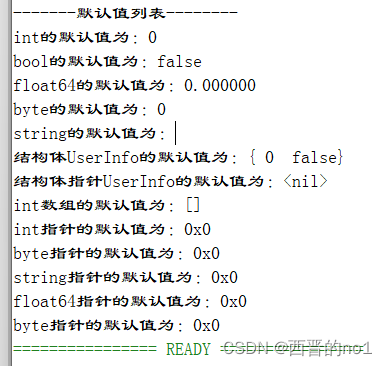前言
超时,指一个协程A开启另一个协程B,A会阻塞等待B一段指定的时间,例如:5秒,A通知B结束(也有可能不通知,让B继续运行)。也就是说,A就不愿意阻塞等待太久。
Go语言有多种方法实现这种超时,我总结出3种:
方法一:用两个通道 + A协程sleep
一个通道用来传数据,一个用来传停止信号。
package main
import (
"fmt"
"time"
)
// 老师视频里的生产者消费者
func main() {
//知识点: 老师这里用了两个线程,一个用个传数据,一个用来传关闭信号
messages := make(chan int, 10)
done := make(chan bool)
defer close(messages)
// consumer
go func() {
ticker := time.NewTicker(1 * time.Second)
for range ticker.C {
select {
case <-done:
fmt.Println("child process interrupt...") // 数据还没收完,就被停止了。
return
default:
fmt.Printf("receive message:%d\n", <-messages)
}
}
}()
// producer
for i := 0; i < 10; i++ {
messages <- i
}
// 5秒后主线程关闭done通道
time.Sleep(5 * time.Second)
close(done)
time.Sleep(1 * time.Second)
fmt.Println("main process exit!")
}程序输出如下:
receive message:0
receive message:1
receive message:2
receive message:3
child process interrupt...
main process exit!
方法二:使用Timer(定时器)
这种方法也方法一类似,只不过是用一个Timer代替通道。
package main
import (
"fmt"
"time"
)
//知识点:
// 1) 多通道
// 2) 定时器
func main() {
ch1 := make(chan int, 10)
go func(ch chan<- int) {
// 假设子协程j是一个耗时操作,例如访问网络,要10秒后才会有数据
time.Sleep(10 * time.Second)
ch <- 1
}(ch1)
timer := time.NewTimer(5 * time.Second) // 设置定时器的超时时间,主线程只等5秒
fmt.Println("select start....")
// 知识点:主协程等待子线程,并有超时机制
select {
case <-ch1:
fmt.Println("从channel 1 收到一个数字")
case <-timer.C: // 定时器也是一个通道
fmt.Println("5秒到了,超时了,main协程不等了")
}
fmt.Println("done!")
}程序输出如下:
select start....
5秒到了,超时了,main协程不等了
done!
方法三:使用context.WithTimeout
下面的例子比较复杂,基于 Channel 编写一个简单的单协程生产者消费者模型。
要求如下:
1)队列:队列长度 10,队列元素类型为 int
2)生产者:每 1 秒往队列中放入一个类型为 int 的元素,队列满时生产者可以阻塞
3)消费者:每2秒从队列中获取一个元素并打印,队列为空时消费者阻塞
4)主协程30秒后要求所有子协程退出。
5)要求优雅退出,即消费者协程退出前,要先消费完所有的int
6)通过入参支持两种运行模式:
- wb(温饱模式)生产速度快过消费速度、
- je(饥饿模式)生产速度慢于消费速度
context.WithTimeout见第87行。
package main
import (
"context"
"flag"
"fmt"
"sync"
"time"
)
// 课后练习 1.2
// 基于 Channel 编写一个简单的单协程生产者消费者模型。
// 要求如下:
// 1)队列:队列长度 10,队列元素类型为 int
// 2)生产者:每 1 秒往队列中放入一个类型为 int 的元素,队列满时生产者可以阻塞
// 3)消费者:每2秒从队列中获取一个元素并打印,队列为空时消费者阻塞
// 4)主协程30秒后要求所有子协程退出。
// 5)要求优雅退出,即消费者协程退出前,要先消费完所有的int。
// 知识点:
// 1) 切片的零值也是可用的。
// 2) context.WithTimeout
var (
wg sync.WaitGroup
p Producer
c Consumer
)
type Producer struct {
Time int
Interval int
}
type Consumer struct {
Producer
}
func (p Producer) produce(queue chan<- int, ctx context.Context) {
go func() {
LOOP:
for {
p.Time = p.Time + 1
queue <- p.Time
fmt.Printf("生产者进行第%d次生产,值:%d\n", p.Time, p.Time)
time.Sleep(time.Duration(p.Interval) * time.Second)
select {
case <-ctx.Done():
close(queue)
break LOOP
}
}
wg.Done()
}()
}
func (c Consumer) consume(queue <-chan int, ctx context.Context) {
go func() {
LOOP:
for {
c.Time++
val := <-queue
fmt.Printf("-->消费者进行第%d次消费,值:%d\n", c.Time, val)
time.Sleep(time.Duration(c.Interval) * time.Second)
select {
case <-ctx.Done():
//remains := new([]int)
//remains := []int{}
var remains []int // 知识点:切片的零值也是可用的。
for val = range queue {
remains = append(remains, val)
fmt.Printf("-->消费者: 最后一次消费, 值为:%v\n", remains)
break LOOP
}
}
}
wg.Done()
}()
}
func main() {
wg.Add(2)
// 知识点:context.Timeout
timeout := 30
ctx, _ := context.WithTimeout(context.Background(), time.Duration(timeout)*time.Second)
queue := make(chan int, 10)
p.produce(queue, ctx)
fmt.Println("main waiting...")
wg.Wait()
fmt.Println("done")
}
/*
启动命令:
$ go run main/main.go -m wb
$ go run main/main.go -m je
*/
func init() {
// 解析程序入参,运行模式
mode := flag.String("m", "wb", "请输入运行模式:\nwb(温饱模式)生产速度快过消费速度、\nje(饥饿模式)生产速度慢于消费速度)")
flag.Parse()
p = Producer{}
c = Consumer{}
if *mode == "wb" {
fmt.Println("运行模式:wb(温饱模式)生产速度快过消费速度")
p.Interval = 1 // 每隔1秒生产一次
c.Interval = 5 // 每隔5秒消费一次
// p = Producer{Interval: 1}
// c = Consumer{Interval: 5} // 这一行会报错,为什么?
} else {
fmt.Println("运行模式:je(饥饿模式)生产速度慢于消费速度")
p.Interval = 5 // 每隔5秒生产一次
c.Interval = 1 // 每隔1秒消费一次
}
}wb(温饱模式)生产速度快过消费速度,输出如下:
运行模式:wb(温饱模式)生产速度快过消费速度
生产者: 第1次生产, 值为:1
-->消费者: 第1次消费, 值为:1
生产者: 第2次生产, 值为:2
生产者: 第3次生产, 值为:3
生产者: 第4次生产, 值为:4
生产者: 第5次生产, 值为:5
-->消费者: 第2次消费, 值为:2
生产者: 第6次生产, 值为:6
生产者: 第7次生产, 值为:7
生产者: 第8次生产, 值为:8
生产者: 第9次生产, 值为:9
生产者: 第10次生产, 值为:10
-->消费者: 第3次消费, 值为:3
生产者: 第11次生产, 值为:11
生产者: 第12次生产, 值为:12
生产者: 第13次生产, 值为:13
-->消费者: 第4次消费, 值为:4
生产者: 第14次生产, 值为:14
-->消费者: 第5次消费, 值为:5
生产者: 第15次生产, 值为:15
生产者: 第16次生产, 值为:16
-->消费者: 第6次消费, 值为:6
main waiting
生产者: 第17次生产, 值为:17
-->消费者: 最后一次消费, 值为:[7 8 9 10 11 12 13 14 15 16 17]
-- done --
je(饥饿模式)生产速度慢于消费速度,输出如下:
运行模式:je(饥饿模式)生产速度慢于消费速度
-->消费者: 第1次消费, 值为:1
生产者: 第1次生产, 值为:1
生产者: 第2次生产, 值为:2
-->消费者: 第2次消费, 值为:2
生产者: 第3次生产, 值为:3
-->消费者: 第3次消费, 值为:3
生产者: 第4次生产, 值为:4
-->消费者: 第4次消费, 值为:4
生产者: 第5次生产, 值为:5
-->消费者: 第5次消费, 值为:5
生产者: 第6次生产, 值为:6
-->消费者: 第6次消费, 值为:6
main waiting
-->消费者: 第7次消费, 值为:0
附:go 实现超时退出
之前手写rpc框架的时候,吃多了网络超时处理的苦,今天偶然发现了实现超时退出的方法,MARK
func AsyncCall() {
ctx, cancel := context.WithTimeout(context.Background(), time.Duration(time.Millisecond*800))
defer cancel()
go func(ctx context.Context) {
// 发送HTTP请求
}()
select {
case <-ctx.Done():
fmt.Println("call successfully!!!")
return
case <-time.After(time.Duration(time.Millisecond * 900)):
fmt.Println("timeout!!!")
return
}
}
//2
func AsyncCall() {
ctx, cancel := context.WithTimeout(context.Background(), time.Duration(time.Millisecond * 800))
defer cancel()
timer := time.NewTimer(time.Duration(time.Millisecond * 900))
go func(ctx context.Context) {
// 发送HTTP请求
}()
select {
case <-ctx.Done():
timer.Stop()
timer.Reset(time.Second)
fmt.Println("call successfully!!!")
return
case <-timer.C:
fmt.Println("timeout!!!")
return
}
}
//3
func AsyncCall() {
ctx := context.Background()
done := make(chan struct{}, 1)
go func(ctx context.Context) {
// 发送HTTP请求
done <- struct{}{}
}()
select {
case <-done:
fmt.Println("call successfully!!!")
return
case <-time.After(time.Duration(800 * time.Millisecond)):
fmt.Println("timeout!!!")
return
}
}总结
到此这篇关于Go语言实现超时的三种方法的文章就介绍到这了,更多相关Go语言实现超时方法内容请搜索好代码网以前的文章或继续浏览下面的相关文章希望大家以后多多支持好代码网!



